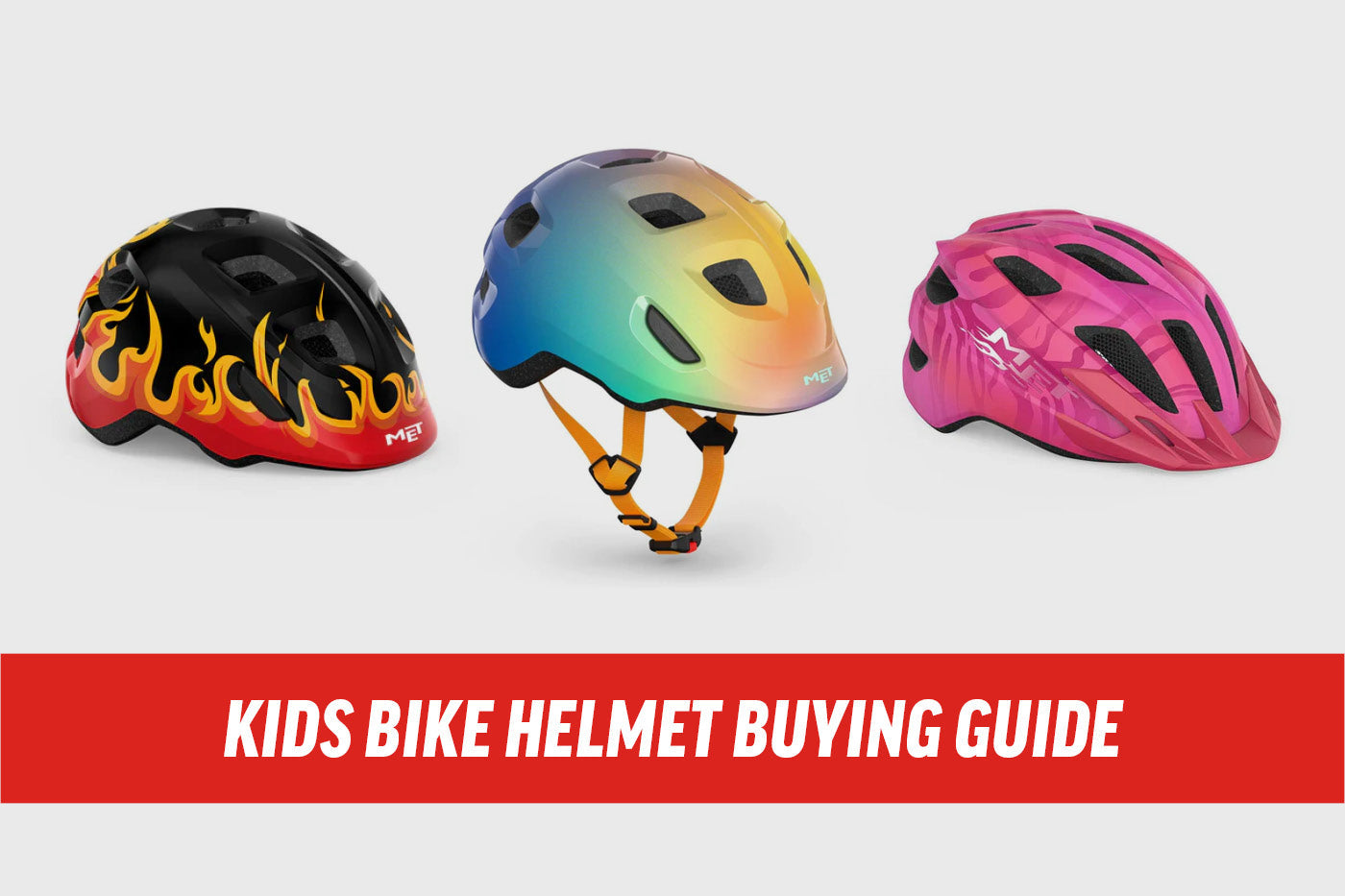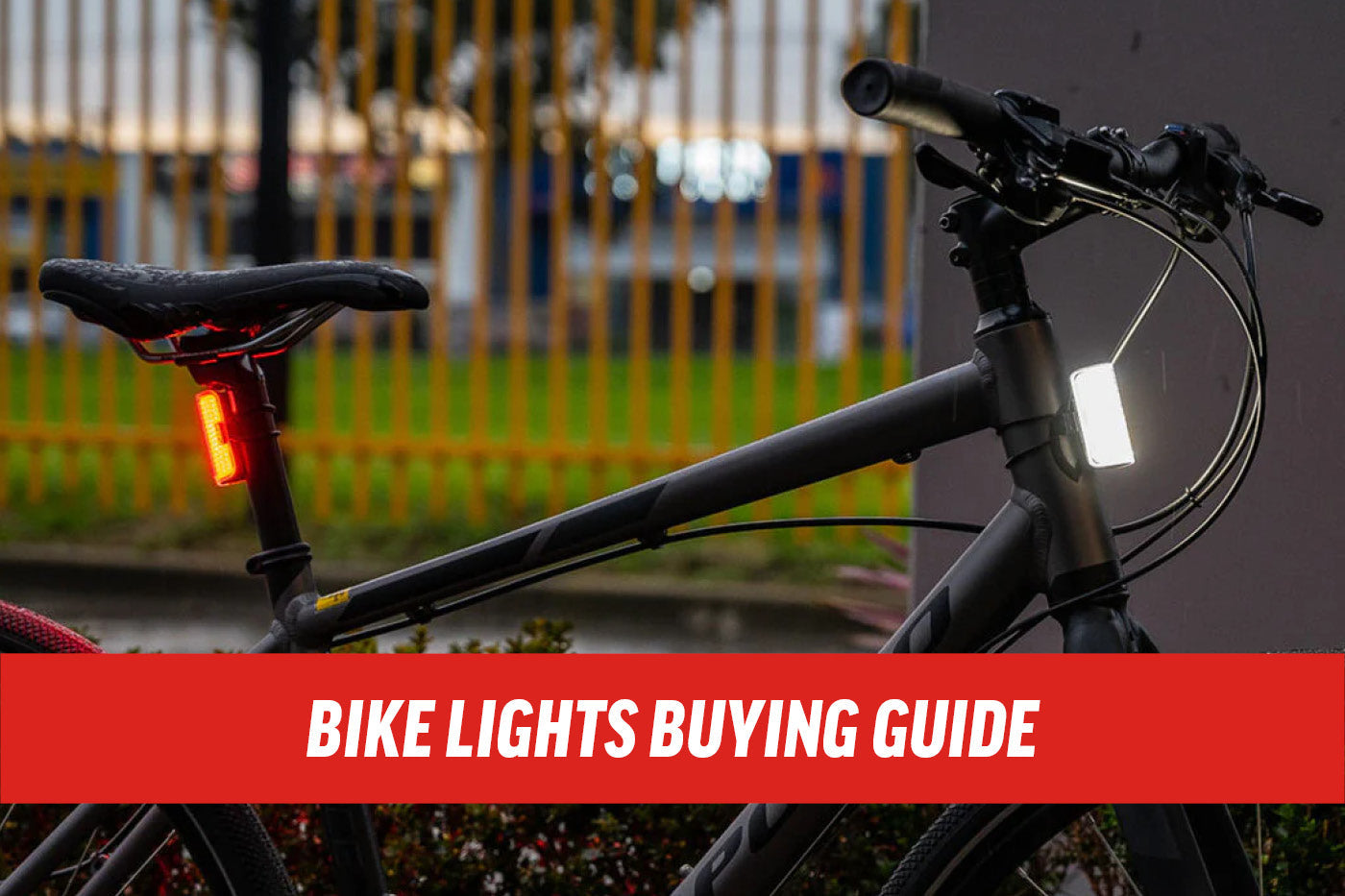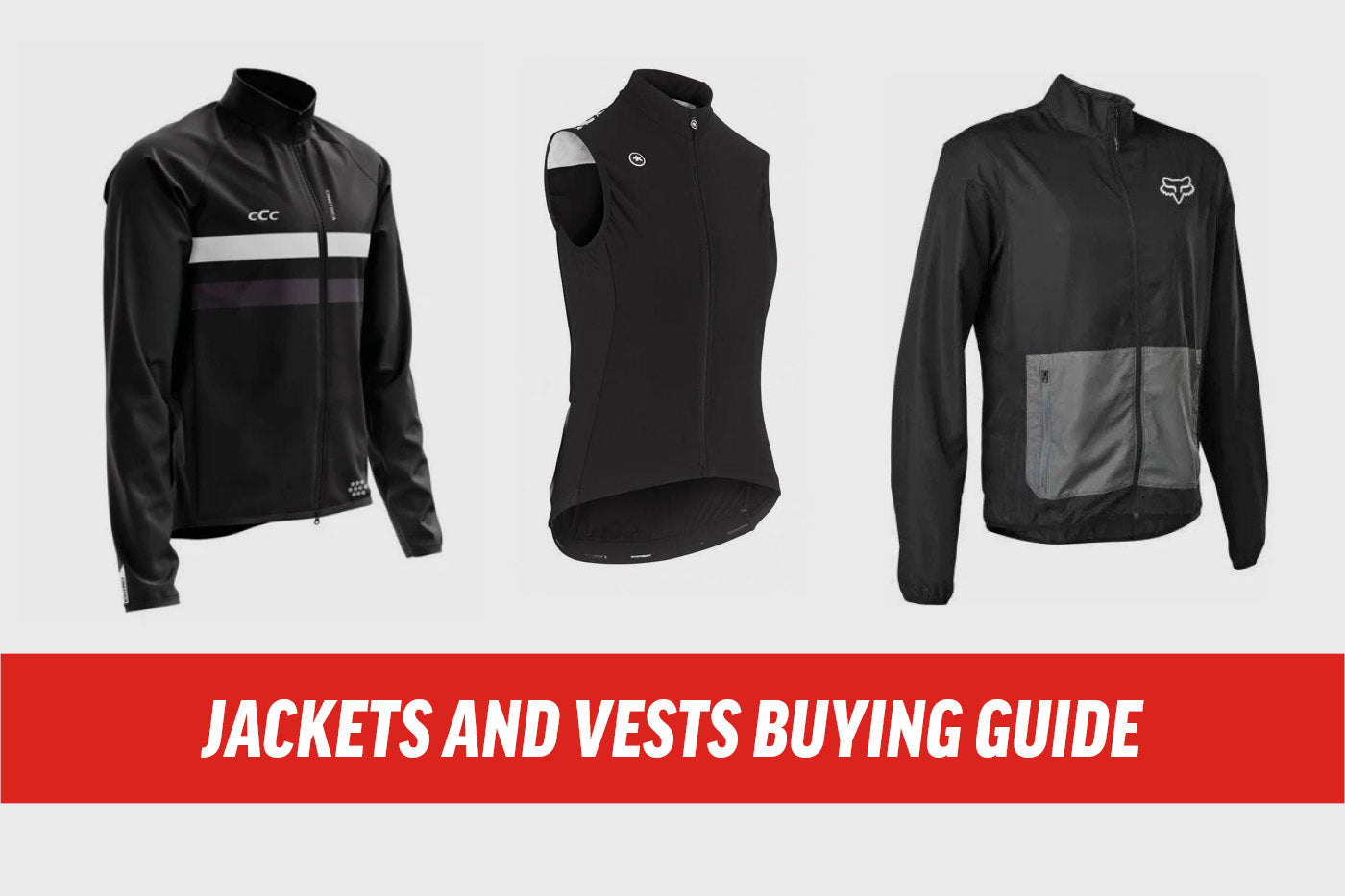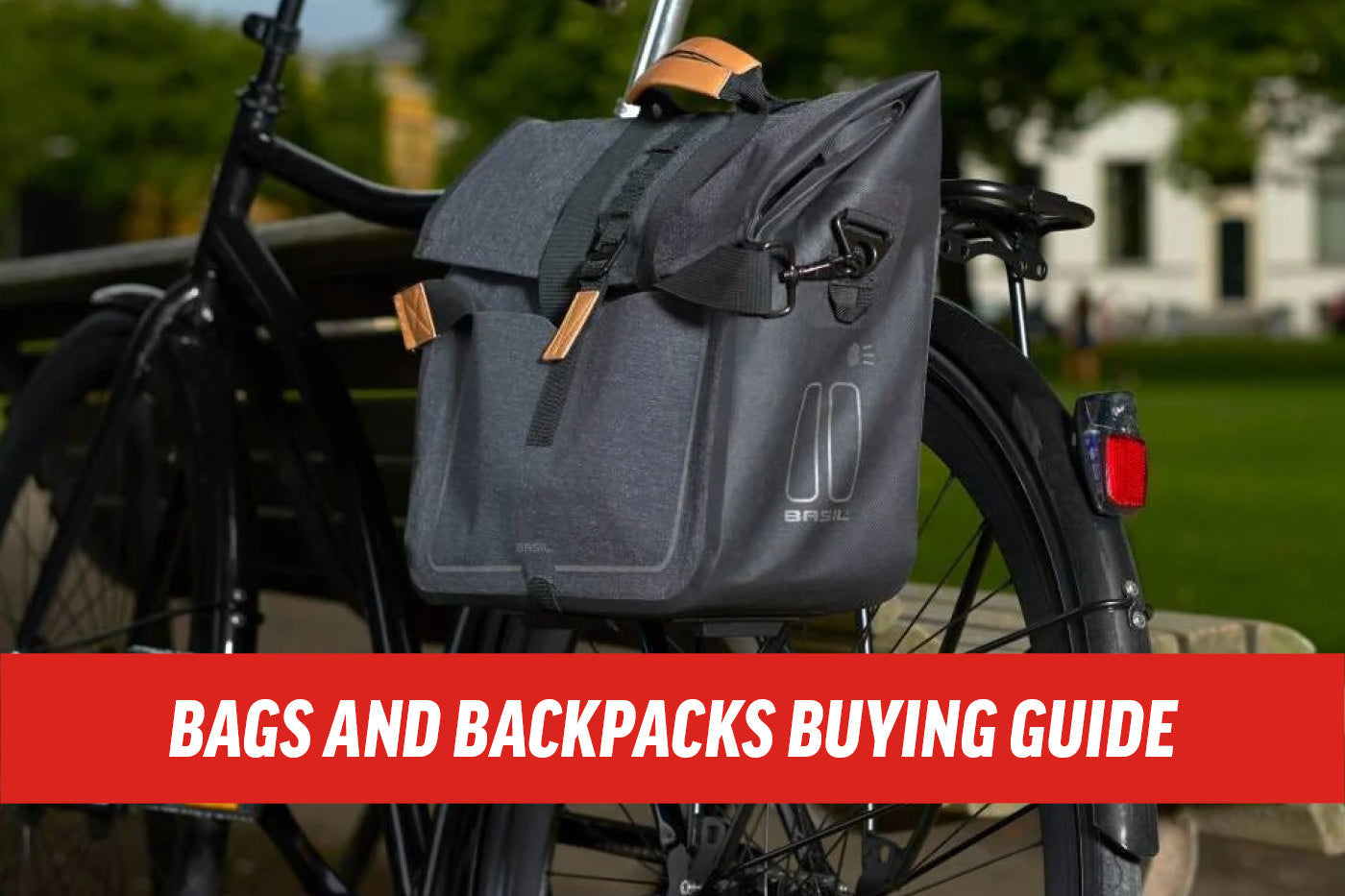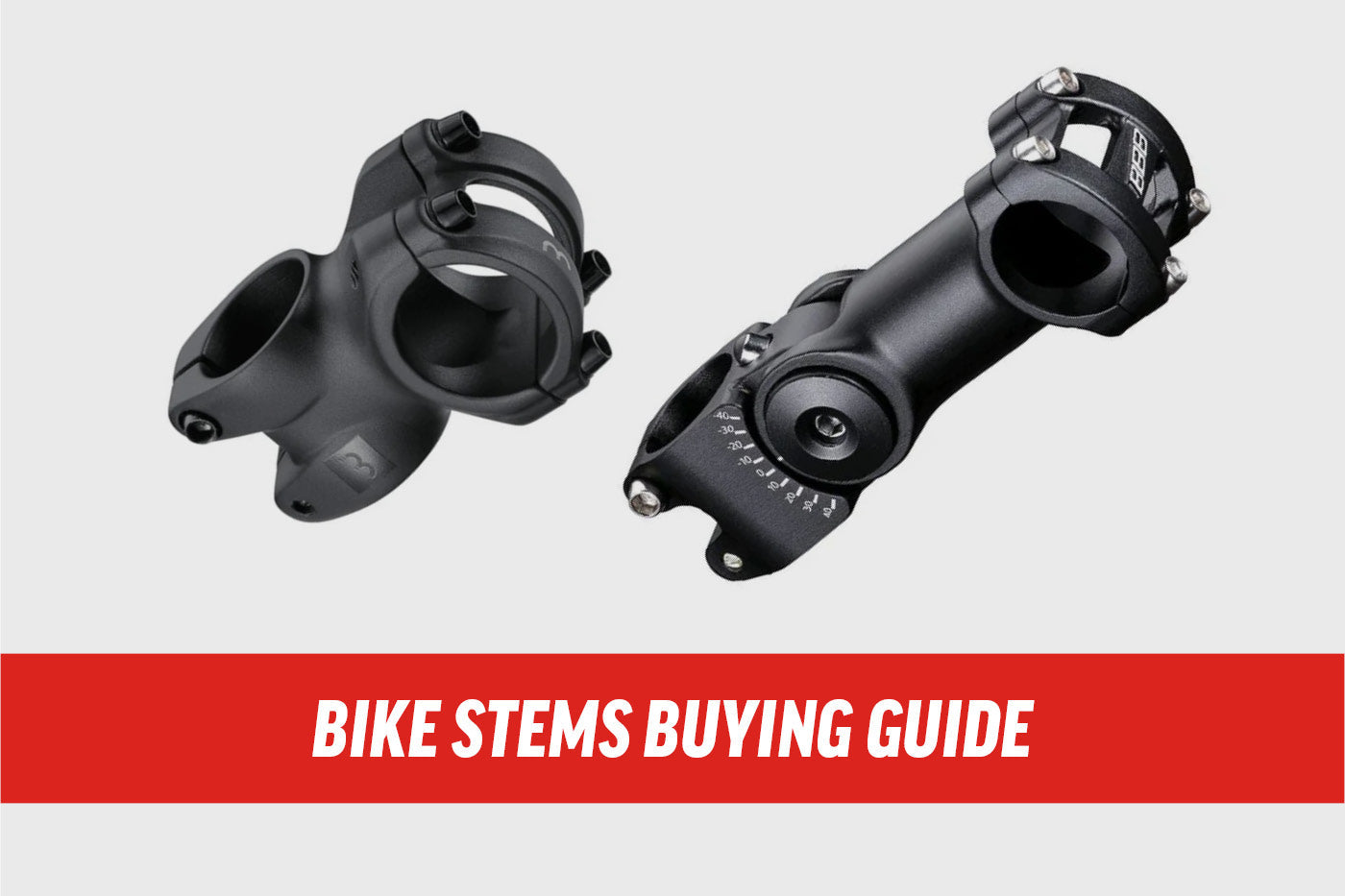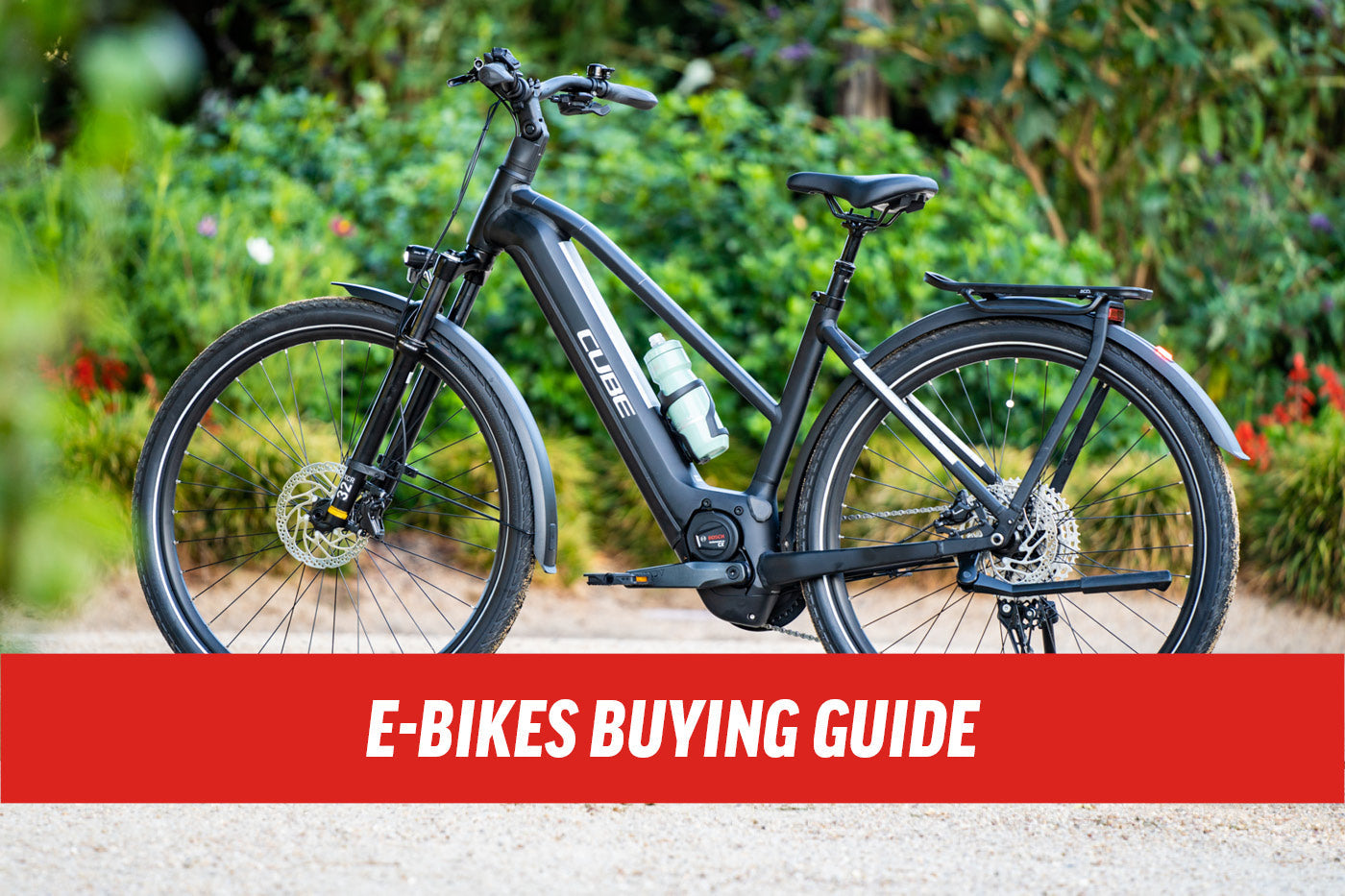Buying Guides and Advice
Buying Guides and Advice
Best Kids Bikes This Christmas: Gift Guide For 2–12 Years Old
If you’re searching for the perfect Christmas gift, few things light up a child’s face like a brand-new bike. Whether they’re just learning to ride or ready to hit the local trails, the right bike can build confidence, independence, and endless hours of fun. To make choosing easier, we’ve rounded up our top kids’ bikes picks this Christmas, grouped by age range and featuring standout models that deliver safety, durability, and style. 🎄 Top Bike Picks for 2–5 Years Old Pedal Sprout 12" Designed for little beginners, the Pedal Sprout is stable, lightweight, and confidence-boosting. Its compact 12” wheels and comfortable geometry make it perfect for toddlers transitioning from balance bikes to pedals.👉 View Pedal Sprout Here Pedal Bing 14" For slightly taller or more adventurous riders, the 14” Pedal Bing offers easy handling and eye-catching colours. A great upgrade for kids gaining pedal power and wanting a “big kid bike” feel.👉 View Pedal Bing Here 🎄 Top Bike Picks for 3–6 Years Old Silverback Skid 16" Known for excellent design and durability, the Silverback Skid is a strong option for active young riders. With a sturdy frame and fun graphics, it’s built for everyday riding and playground adventures. 👉 View Silverback Skid Here Pedal Buzz 16" Fun, sporty, and tough, the Pedal Buzz offers reliable performance for kids honing their riding skills. The 16" size is ideal for this age bracket, giving young riders stability as they grow in confidence. 👉 View Pedal Buzz Here 🎄Top Bike Picks for 5–8 Years Old Silverback Spyke 20" A beautifully designed kids’ bike, the Spyke 20 combines lightweight construction with quality components. Perfect for children ready to explore more! 👉 View Silverback Spyke Here Pedal Chomp 20" With its bold colours and comfy ride, the Pedal Chomp is great for kids who want a stylish yet sturdy bike. A fantastic step-up bike before entering the pre-teen sizes. 👉 View Pedal Chomp Here 🎄 Top Bike Picks For 8–11 Years Old Silverback Spyke 24" The Spyke 24 is a true adventure-ready machine. Larger wheels, improved gearing, and trail-capable geometry make it ideal for kids who want to explore parks, bike paths, and easy off-road terrain. 👉 View Silverback Spyke Here Pedal Crush 24" A vibrant and fun ride that’s built tough, the Pedal Crush is perfect for daily commutes to school, neighbourhood rides, and weekend outings. 👉 View Pedal Crush Here 🎄 Top Bike Picks For 10+ Years Old Pedal Renegade 26" A sharp-looking 26” bike with versatility and style. The Pedal Renegade is a great match for growing riders who want the look and feel of an adult bike in a youth-friendly package. 👉 View Pedal Renegade Here Silverback Spyke 26" This bike takes performance up a notch. With its lightweight frame and trail-inspired design, it's perfect for adventurous young riders ready to tackle longer rides or off-road challenges. 👉 View Silverback Spyke Here Whether your little one is just starting out or already racing around the neighbourhood, we've got the perfect bike for them this Christmas! Shop all kids bikes here
Read moreYour Ultimate E-Scooter Buying Guide (2025 Edition)
Find Your Perfect Ride with 99 Bikes Thinking about ditching the car or public transport for a fun, efficient, and eco-friendly ride? Electric scooters are zipping their way into Australian cities, offering a fantastic way to navigate your daily commute or simply enjoy getting around. At 99 Bikes, as the world's most approachable bike store, we believe getting started should be easy and, most importantly, safe. That's why we've put together this ultimate guide to help you choose the best e-scooter for your needs. We'll break down the jargon, answer your burning questions, and show you some of our top picks designed for the Australian way of life. In a Nutshell: Our Top E-Scooter Picks Best For... Our Pick: Key Highlight: Overall Urban Ride Segway Ninebot E3 Pro Electric Scooter Fantastic blend of portability, range, and comfort. Designed to fit under train seats! Best Value Segway Ninebot E2 Pro Electric Scooter Affordable entry into reliable e-scooter commuting with Segway's trusted tech. Long-Distance Commutes Segway Ninebot KickScooter MAX G3 Incredible range (up to 65km) and robust build for extended trips. All-Terrain & Comfort Segway Ninebot ZT3 Pro Electric Scooter Built tough with advanced dual suspension for a premium, smooth ride. Kids & Young Riders Segway Ninebot C2 Lite eKickScooter Safe, fun, and easy to ride for the younger generation. For most urban commuters, an e-scooter with pneumatic (air-filled) tyres, a dual braking system, and a water-resistance rating of at least IPX4 offers the best balance of comfort, safety, and real-world durability. What to Look For: Key Features & Considerations Choosing an e-scooter can feel a bit overwhelming. Let's break down the most important features to consider, from an approachable, expert perspective. 1. Portability & Weight: Can You Take It With You? Your e-scooter's weight and how easily it folds are crucial if you plan to combine your ride with public transport or carry it into your office. Lighter is often better: Scooters typically range from around 12kg to over 25kg. If you're carrying it up stairs or onto a train, every kilogram counts! Folding Mechanisms: Check how easily and securely a scooter folds down. A compact fold is key. Train-Friendly Design: The Segway Ninebot E3 Pro, for example, is specifically designed to be compact enough to stow under most train seats, making it a fantastic option for multi-modal commuters. Important Public Transport Note: While e-scooters are great for trains, it's worth noting that most buses in Australia do not allow e-scooters onboard due to safety and space regulations. Always check with your local council or public transport provider if integrating a bus ride is part of your commute plan. Heavy Duty = Heavier Weight: Keep in mind that more powerful, long-range, or off-road models (like the ZT3 Pro) tend to be significantly heavier due to larger batteries and more robust frames. 2. Range & Hill Climbing Ability: Conquering Your Commute Don't underestimate those "small" inclines! Your daily route might surprise you when tackling it on two wheels. Range (Battery Size): This (in km) is how far you can travel on one charge. We recommend choosing a model with a "real-world" range that's at least 20-30% more than your daily round trip to avoid "range anxiety." Hill Climbing Power: This is where motor power (Watts) and torque (Nm) matter. A higher-watt motor will handle hills better. Tip: You might not realise how steep your commute is until you're on a scooter! Google Maps' "Bicycling" directions can give you a rough idea of inclines (elevation gain) and a reasonable estimate of your trip time. 3. Tyre Type: Pneumatic (Air) vs. Solid This is a huge factor in ride quality. You have two main choices: Pneumatic (Air-Filled) Tyres: Pros: Much smoother and more comfortable ride, as the air acts as a natural shock absorber. Better grip, especially in wet conditions. Cons: Can get punctures (though this is less common with quality tyres and proper inflation). Solid (or Honeycomb) Tyres: Pros: 100% puncture-proof. Zero maintenance. Cons: A much harsher, bumpier ride. You will feel every crack in the pavement. Can be slippery in the wet. Our Approachable Advice: For most urban riders, pneumatic (air-filled) tyres are worth it for the massive boost in comfort and safety. Just learn to check your tyre pressure, like on a bike! 4. Suspension Systems: Smooth Riding Ahead Not all roads are perfectly smooth! Suspension absorbs bumps and vibrations, making your ride much more comfortable and safer. No Suspension: Common on entry-level models. Relies entirely on pneumatic tyres for cushioning. Dual Suspension: Found on premium and all-terrain models (like the Segway Ninebot ZT3 Pro), this offers the best ride comfort by absorbing bumps at both the front and rear wheel. Improved Control: Suspension doesn't just absorb bumps; it also helps dampen inertia when you're braking quickly, pushing the tyre into the ground for better grip. This keeps the scooter more stable and easier to handle during sudden stops. 5. Braking Systems: Your Safety Net Reliable brakes are non-negotiable. E-scooters typically use one or more of these systems: Disc Brakes: (Like on a car or mountain bike) Offer the best and most reliable stopping power, especially in the wet. Drum Brakes: Enclosed within the wheel hub, they are very low-maintenance and work well in all weather. Electronic (Regenerative) Brakes: Use the motor to slow down, which can put a tiny bit of charge back into the battery. These are best paired with a disc or drum brake. Our Recommendation: Always look for a scooter with a high-quality mechanical brake (disc or drum), not just an electronic one. 6. Lighting Systems: Be Seen & See Your Way Lights are essential for visibility, especially if you ride at dawn, dusk, or night. "To Be Seen" Lights (50-200 Lumens): These are standard on most scooters. They are bright enough to make you visible to cars and pedestrians on well-lit city streets. "To See" Lights (400+ Lumens): If you are riding through unlit or dimly lit areas like bike paths or quiet streets, you will need a more powerful front light to see potholes and obstacles. Indicators: Some higher-end models, like the Segway Ninebot ZT3 Pro, come with built-in turn indicators, which is a fantastic safety feature for signalling your intentions in traffic. 7. Water Resistance (IP Rating): Can I Ride in the Rain? This is a critical "real-world" question. The answer is in the scooter's IP (Ingress Protection) Rating. What it means: An IP rating has two numbers (e.g., IPX4). The first is for dust, the second is for water. IPX4: "Splash resistant from any direction." This is the minimum you should look for. It means you're protected if you get caught in light rain or splash through a small puddle. IPX5: "Protected against low-pressure water jets." This is even better and gives you more confidence in all-weather commuting. Important: No e-scooter is fully "waterproof." You should never submerge it or ride in torrential rain. 8. Security: Keeping Your Ride Safe E-scooters are a valuable investment, so security is paramount. Digital Security: The Segway Ninebot range is a leader here, offering app-based features like GPS trackability and on some models the ability to lock and unlock the bike based on your proximity to your scooter! Physical Locks: The Challenge: Locking an e-scooter can be tricky, as many models lack the closed loops you find on a bike. Our Recommendation: D-Locks (U-locks) are typically a great option. Their rigid shape makes them difficult to manipulate or slide out from around the scooter's main stem or a folding mechanism. Always lock your scooter to an immovable object. 9. Weight Capacity (Max Rider Load) This is a key safety spec. Always check the maximum rider weight for any scooter you're considering. This limit (usually 100kg or 120kg) is set by the manufacturer to ensure the frame, brakes, and motor can operate safely and durably. Remember to factor in the weight of your backpack, too! 10. Safety & Legality: Ride Smart, Ride Legal Your safety is our priority, and understanding local regulations is key. Helmet Up! Always, always, always wear a helmet. It's the law in most of Australia, and it's simply the smartest thing you can do on a scooter. Battery Safety: All e-scooters sold at 99 Bikes feature high-quality Lithium-Ion batteries and chargers that meet stringent Australian standards. Always use the original charger and never leave a charging scooter unattended. Local Regulations: E-scooter legality varies significantly across Australia. E-scooters are only legal on public footpaths or roads in some regions/council areas, often with specific speed limits (like in Brisbane). In other areas (like Sydney), they may be restricted to private property only. Crucial: You MUST consult your local council's website or state transport authority for the most up-to-date rules on where you can legally ride in your area. Speed Limits: To comply with legislation in most councils that do allow the use of e-scooters on public land, our product range is limited to 25km/h from the factory. 11. Warranty & Support: The 99 Bikes Advantage This is one of the most important, and often overlooked, parts of your purchase. Why buy from 99 Bikes? When you buy from us, you're not just getting a box. You're getting peace of mind. Real Warranty Support: If something goes wrong, you don't have to deal with a faceless overseas website. You can bring your scooter back to us, and our team will manage the warranty process for you with the Australian supplier. Real People: Our team can give you expert, approachable advice before you buy and support you after.
Kids Bikes Buying Guide
How to Choose the Right Kids Bike Whether it's your kids first bike, or they've outgrown their old set of wheels; buying a kids bike can be difficult if you don't know how to pick the right one. First things first, kids bikes are sized according to their wheel size, not their frame size like adult bikes. Size is the most important consideration when choosing bicycles for kids. The right size bike will help keep your child safe, comfortable and get the most enjoyment from their bike. Another important consideration is the frame weight. A lightweight frame that places the child in a stable, comfortable riding position will be easier to pedal and more enjoyable to ride, meaning it will get ridden much more! Bikes made with alloy frames are typically more expensive than bikes with steel frames. The benefits of alloy are that it is lighter and easier for the child to ride, as well as being less prone to rust. An alternative for older kids are BMX bikes. BMX frames are generally more heavy duty, but this does make them slightly heavier so they're better suited to more experienced riders. All kids bikes at 99 Bikes are professionally assembled by a trained bike mechanic according to a rigorous safety checklist. This ensures both a safer and less frustrating experience than assembling the bike yourself. KID'S BIKE SIZING The height of the child is more important than the child's age, however, for simplicity this guide refers to the suitability of the bike relative to approximate age groups. Bike Size (Wheel Diameter) Approximate Age Range Child Height Range Balance Bike (12") Up to 2 years Up to 94cm 12" Bike 2 - 4 years 75 - 94 cm 14" Bike 2 - 5 years 80 - 108 cm 16" Bike 3 - 6 years 84 - 112 cm 20" Bike 5 - 8 years 108 - 129 cm 24" Bike 8 - 11 years 125 - 148 cm 26" Bike 10+ years 145 - 160 cm BALANCE BIKES - TODDLERS Balance bikes all come in a 12 inch wheels size and are suitable for kids up to 2 years old. Balance bikes are two wheeled bike without pedals that allow children to sit and coast, helping them develop the balance and skills required to ride a bicycle. The perfect introduction to bikes Balance bikes come with a 12 inch wheel Suitable for kids up to 2 years old No pedals, so they help develop important balance and skills required for riding See All Balance Bikes 12" KIDS BIKES (AGES 2-4 YEARS OR 75-94CM) 12 inch bikes are generally suitable for kids 2-4 years old. These bikes come with training wheels, and may feature a push steerer so the child can be assisted or directed when needed. 12 inch kids bikes are best suited to young children ages 2-4 years old These bikes come with training wheels May feature a push steerer so the child can be assisted or directed where needed See All 12" Bikes 14" KIDS BIKES (AGES 2-5 YEARS OR 80-108CM) A 14-inch kids’ bike is a great step up from balance bikes or smaller trainer models, offering young riders their first experience with pedals while maintaining stability and confidence. Designed for kids aged 2 to 5 years old (with a height range of 80cm to 108cm), these bikes come with features that help them learn and enjoy their ride safely. Lightweight frames and smaller grips ensure little hands can steer comfortably. Many models include removable training wheels, making the transition from assisted riding to two wheels smooth and stress-free. Coaster brakes (pedal backward to stop) or child-specific hand brakes help young riders develop control and stopping confidence. Low stand-over heights, stable wheelbases, and soft-touch saddles provide comfort and security for growing riders. See All 14" Bikes 16" KIDS BIKES (AGES 3-6 YEARS OR 84-112CM) 16 inch bikes are generally suitable for kids aged 3 – 6 years old. Typically bikes this size will have training wheels and no gears. Around this age children may not have developed a lot of the strength required for riding, so the bike’s weight will be an important consideration. For older children you may want to consider a 16” BMX for a stronger, heavier duty bike. 16 inch kids bikes are suited to those aged between 3 and 6 years old These bikes will typically come with training wheels and no gears Bike weight is an important consideration as some kids will not have developed a lot of strength required for riding For older children you may want to consider a 16” BMX for those kids wanting a stronger or more heavy duty bike Comes with rear 'coaster' brakes (pedal backwards to brake), and front hand brakes. See All 16" Bikes 20" KIDS BIKES (AGES 5-8 YEARS OR 108-129CM) 20 inch bikes are generally suitable for kids aged 6 -10 years. 20 inch is also the standard size for a BMX wheel, and given they both have no gears the 20 inch kid’s bike and BMX share a lot of similarities. The main difference between the two is that a kid’s bike will be lighter and easier to ride, and a BMX will be heavier and more durable. Kid’s bikes are designed in a mountain bike style, whereas BMX are designed more for street and skate park riding. A kid’s bike may be a better option if the child is still learning to ride, while a BMX will be more suitable if the child is already confident - or if they have a tendency to be rough with things. Some 20 inch bikes also come with gears, which can be beneficial if the child is a bit more experienced and coordinated, as well as suspension for better comfort and handling. 20 inch kids bikes are best suited for kids aged between 6 to 10 years old This size is also the standard size for BMX Kids 20 inch bikes are designed as a mountain bike style, so they’re easier to ride and lighter Kids bikes are the best option if they are newer to riding BMX bikes are more durable and designed for street or skate park riding BMX are great for the more confident rider or if they tend to be rough with things! Some 20” kids bikes come with gears so are a great options if your child is more experienced and wants to build on their riding skills Comes with hand brakes. See All 20" Bikes 26" KIDS BIKES (AGES 10-13 YEARS OR 145-160CM) 26 inch mountain bikes are suited for kids that are 10-13 years old. 26 inch bikes typically feature gears and suspension forks. 26 inch bikes are the largest of kids bikes with the next progression in bikes being an extra small adult bike. Taller kids above 148cm now have an option to go for a 26” kids bikes as opposed to a small adult’s frame These 26 inch kids bikes offer great value for older kids The junior frame stye features an easy reach brake lever and other child-friendly features, making them a preferred choice over an extra small adult’s frame for children See All 26" Bikes How to Pick the Perfect Kids' Bike Step 1: Find the Right Size The most important factor when choosing a kids’ bike is size. Unlike adult bikes, which are sized by frame, kids' bikes are measured by wheel diameter. Use our handy size chart above to match your child's height to the correct wheel size. If your child falls between sizes, consider their experience and confidence level: More experienced riders can handle a larger frame, which they’ll grow into. Less confident riders will find a smaller bike easier to control and manoeuvre. Step 2: Match the Bike to Their Riding Competency Once you’ve found the right size, consider your child's riding ability and skill level: Training Wheels: If your child is just learning to ride, look for a bike that comes with training wheels, or purchase them separately. We can help with installation! Single-Speed vs. Geared Bikes: Single-speed bikes are great for beginners still learning balance and braking. Geared bikes help with tackling hills and longer rides but require more skill to use properly. Step 3: Let Them Choose Their Favourite Colour This might just be the most important step! A bike in your child's favourite colour makes for an even more exciting gift. When they love the look of their new bike, they’ll be eager to ride it. Understanding Key Features Based on Budget Once you've covered the basics, your budget will determine the frame material, braking system, and extra features that suit your child's needs. Frame Material: Alloy vs. Steel Alloy frames are lighter and slightly more expensive, making them easier for kids to ride and handle. Steel frames are more affordable but heavier, which can make riding more challenging for younger kids. Braking Systems: V-Brakes vs. Disc Brakes V-brakes (rim brakes) are more affordable and found on most entry-level kids' bikes. Disc brakes offer better stopping power and are typically found on premium models. Comparing Kids' Bike Options Here’s a breakdown of three great kids’ bikes at different price points to help you decide: Budget-Friendly Kids' Bike ($) – Pedal Chomp - $299 Steel frame Rim brakes 7-speed Shimano twist shift gears All-Rounder Kids' Bike ($$) – Pedal Crush - $399 Lightweight alloy frame Rim brakes 7-speed Shimano trigger shift gears Upgraded grips and saddle for comfort Premium Kids' Bike ($$$) – Pedal Renegade - $549 Lightweight alloy frame Mechanical disc brakes 8-speed trigger Microshift gears Upgraded grips and saddle for a premium riding experience Picking the perfect kids' bike comes down to size, competency, and personal preference. Whether you're looking for a budget-friendly option or a high-performance bike, there’s a perfect match for every young rider. Visit us in-store or online to explore our full range and get expert advice on the best choice for your child!
Kids Bike Helmet Buying Guide
A child's laughter as they pedal their bike for the first time is a joyous sound. But with the fun and freedom of cycling comes the responsibility of safety. And when it comes to bike safety, there's one piece of equipment that's non-negotiable: a helmet. This guide will walk you through the importance of helmets for kids, how to pick one they'll love to wear, and how to ensure it fits perfectly for maximum protection. Why a Helmet is a Must-Have Riding a bike is a fantastic way for kids to stay active and explore their world. But falls and tumbles are an inevitable part of learning to ride. A properly fitted helmet is the single most effective way to prevent head injuries, reducing the risk of serious brain injury by up to 88%. It's not just for the road; a helmet should be worn every time your child rides, whether it's on the footpath, at the park, or in your own driveway. By starting the helmet habit early, you're instilling a lifelong safety practice. When kids see their parents and older siblings wearing helmets, it becomes a normal and expected part of getting on a bike. Finding a "Cool" Helmet They'll Want to Wear The safest helmet is the one your child will actually wear. If a helmet is uncomfortable or they don't like the design, it's more likely to be left behind. Here's how to find a helmet that's both safe and stylish: Let Them Choose: Get your child involved in the selection process. They're far more likely to be enthusiastic about wearing a helmet that they've picked out themselves. Whether it's their favourite colour, a cool pattern, or a design featuring their favourite character, a helmet that reflects their personality is a winner. Comfort is Key: Look for a lightweight helmet with good ventilation to keep them cool on hot days. Comfortable straps that don't chafe are also important. Some helmets even come with magnetic buckles that are easier for little hands to use and reduce the risk of pinching. Consider the Style: The type of riding your child does can also influence the style of helmet. A skate-style helmet might be more appealing for trips to the skate park, while a more traditional bike helmet is great for everyday riding. A kids mountain bike helmet can also be quite versatile. Ensuring the Perfect Fit for Maximum Protection An ill-fitting helmet won't provide the protection your child needs. A helmet should be snug, but not too tight. Here's how to get the perfect fit: Measure Their Head: Use a soft tape measure to find the circumference of your child's head. Measure about two finger-widths above their eyebrows, keeping the tape level all the way around. This measurement will help you when looking at helmet size charts. Position it Correctly: The helmet should sit low and level on their forehead, not tilted back. You should be able to fit one or two fingers between their eyebrows and the bottom of the helmet. Check the Side Straps: The side straps should form a "Y" shape just below their earlobes. Adjust the Chin Strap: The chin strap should be snug enough that you can only fit one or two fingers between the strap and their chin. When they open their mouth wide, they should feel the helmet pull down slightly. The "Shake" Test: Ask your child to shake their head from side to side and nod up and down. The helmet should not move or wobble. By following these simple steps, you can ensure that your child's helmet is providing the best possible protection. A well-fitting, "cool" helmet will give you peace of mind and allow your child to enjoy the freedom and fun of cycling safely.
Cycling Shoes Buying Guide
Step Up Your Ride: The Ultimate Cycling Shoes Buying Guide If you're looking to get more out of your bike rides, one of the biggest upgrades you can make is what you put on your feet. Ditching your regular trainers for a pair of dedicated cycling shoes is a total game-changer. Why? This improvement comes from shoes designed specifically for cycling, whether they connect to "clipless" pedals for maximum efficiency or grip tenaciously onto flat pedals for confidence and control. This guide will break down everything you need to know to find the perfect pair for your ride. Types of Cycling Shoes The first step is to match your shoe to your primary style of riding. Each type is specifically designed for a different environment. Road Cycling Shoes: Built for speed and efficiency on pavement, these are the lightweights of the cycling world. They feature extremely stiff soles to maximize power transfer and a sleek profile for aerodynamics. They are designed to be used with clipless pedals and are very awkward to walk in due to the large, external cleat. Mountain Bike (MTB) Clipless Shoes: Designed for off-road riders who want to be locked in. These shoes have a rugged construction and a stiff sole, but with enough flexibility for short hikes. The small metal cleat is recessed into the sole and surrounded by rubber tread, making it much easier to walk in than a road shoe. Flat Pedal Shoes: A popular choice for mountain bikers (especially for trail, enduro, and downhill), commuters, and BMX riders. These look similar to skate shoes but are packed with cycling-specific technology. They feature an ultra-sticky rubber outsole with a special tread pattern designed to interlock with the pins on a flat pedal, providing incredible grip. The sole is also much stiffer than a regular trainer, reducing foot fatigue and improving pedalling efficiency. They offer the freedom to quickly take a foot off the pedal, which is great for building confidence on technical trails. Indoor/Spin Shoes: Made for spin classes or your indoor trainer. These are often a hybrid, designed with comfort and breathability as top priorities. Many have soles compatible with both 2-bolt and 3-bolt clipless systems, giving you flexibility depending on the bike you're using. Understanding Cleats For riders choosing a "clipless" system, understanding cleats is essential. (If you've gone for flat pedal shoes, feel free to jump to the next section!) The cleat is the crucial link that bolts to the bottom of your shoe and clips into the pedal. The two main systems are not interchangeable. 3-Bolt System (Look KÉO / Shimano SPD-SL style): This is the standard for road cycling. The large, plastic cleat creates a wide, stable platform against the pedal, which is perfect for efficient power transfer over long distances. Different coloured cleats often indicate the amount of "float" (the degree your foot can rotate), allowing you to find a comfortable position. 2-Bolt System (Shimano SPD style): This is the go-to for mountain biking, gravel riding, and indoor cycling. The smaller metal cleat is recessed into the shoe's sole, which allows for easy walking and quick clipping in and out. This system is also better at shedding mud and debris. Fastening Systems How a shoe closes affects its fit, weight, and ease of adjustment. BOA Dials: A ratcheting dial tightens a steel wire, providing incredibly precise, on-the-fly adjustments and distributing pressure evenly across your foot. This is a top choice for performance and convenience on clipless shoes. Laces: The classic choice for flat pedal shoes and some clipless models. Laces offer the most customisable fit, allowing you to perfectly tailor the tension across your entire foot. Just be sure to securely tuck them away from your chain. Velcro Straps: Simple, lightweight, and reliable. Velcro is common on entry-level to mid-range shoes and is very easy to use, though it offers less fine-tuning than a dial system. Sole Materials A shoe's sole dictates its stiffness—the key to efficient pedalling. Carbon Fibre: The gold standard for clipless road shoes. Carbon soles are the lightest, stiffest, and most efficient option available, ensuring maximum power transfer. Nylon / Composite: The most common material in mid-range clipless shoes. It offers an excellent balance of stiffness, comfort, and affordability. Rubber Composite: The heart of a flat pedal shoe. The stiffness comes from an internal shank (a reinforced plate), while the outsole is made of a carefully formulated sticky rubber compound for maximum grip on the pedal pins. Final Thoughts: Fit is King While it's easy to get caught up in sole materials and fastening systems, the most important factor of all is fit. A shoe that doesn't fit correctly will be uncomfortable and inefficient, regardless of how expensive it is. Sizing varies between brands, so it's always best to try shoes on before you buy. A well-fitting shoe should be snug in the heel with a little bit of wiggle room for your toes. Once you find that perfect pair, you'll wonder how you ever rode without them.
Bike Locks Buying Guide
A cyclist's best friend is a trusty bike lock. With so many options on the market, choosing the right one can feel overwhelming. This guide will break down the different types of bike locks, their features, and help you make an informed decision to keep your beloved bike safe and sound. Why You Need a Bike Lock The primary purpose of a bike lock is to deter theft. A good lock makes your bike a less attractive target, forcing thieves to either give up or spend more time and effort trying to steal it, which increases their risk of being caught. Investing in a quality lock provides peace of mind, allowing you to leave your bike unattended without constant worry. Types of Bike Locks U-Lock / D-Lock U-locks, also known as D-locks, are a popular choice for their high level of security. They consist of a rigid U-shaped shackle that locks into a crossbar. Their hardened steel construction makes them resistant to cutting and leverage attacks. U-locks are ideal for securing your bike frame to a fixed object like a bike rack or pole. Folding Lock Folding locks offer a great balance of security and portability. They are made of a series of steel plates connected by rivets, allowing them to be folded into a compact size for easy transport. While generally not as secure as a high-quality U-lock, they provide more flexibility for locking your bike to various objects. Chain Lock A chain lock consists of a heavy-duty chain and a separate padlock. Their flexibility allows you to secure your bike to a wide range of objects, and they are a formidable deterrent against cutting attacks. However, their weight can make them less convenient to carry around. Look for chains with hexagonal or trapezoidal links for added security. Cable Lock Cable locks are the lightest and most portable option, but they offer the least amount of security. They are best used as a secondary lock to secure your wheels or accessories, or for very short stops in low-risk areas. Even thick cable locks can be easily cut with bolt cutters. Additional Security Features Smart Trackers In the unfortunate event your bike is stolen, a smart tracker can be a lifesaver. These small devices can be hidden on your bike and use in-built GPS or other technologies like an Apple AirTag (sold separatey) to track its location, significantly increasing the chances of recovery. Alarms Some bike locks now come with built-in alarms. These motion-sensitive devices will emit a loud siren if your bike is tampered with, drawing attention to the thief and scaring them off. Locking Mechanism - Combo vs. Key Locks Combination Locks Combination locks offer the convenience of not having to carry a key. You can set your own personal code, making them easy to use and share. However, they are generally considered less secure than key locks and can be more susceptible to being decoded by a skilled thief. Key Locks Key locks provide a higher level of security, with complex key designs that are difficult to pick. They are the preferred choice for high-risk areas or for securing expensive bikes. The only downside is the need to carry a key, which can be lost or forgotten. Conclusion Choosing the right bike lock depends on your individual needs and risk factors. For the highest level of security, a U-lock or a heavy-duty chain lock is your best bet. A folding lock is a great option for those who prioritize portability. Cable locks should only be used as a secondary deterrent. Consider adding a smart tracker or an alarm for an extra layer of protection. And when it comes to locking mechanisms, a key lock will almost always be more secure than a combination lock. By understanding the different types of locks and their features, you can select the perfect one to keep your bike safe and give you the freedom to ride without worry.
Bike Lights Buying Guide
Your Ultimate Guide to Choosing the Perfect Bike Lights Whether you're a daily commuter, a weekend road warrior, or a trail-shredding mountain biker, having the right set of bike lights is crucial for your safety. Not only do they illuminate your path in low-light conditions, but they also make you visible to other road users. With a bewildering array of options on the market, choosing the right lights can be a daunting task. This guide will shine a light on the key features to consider and help you find the perfect set for your needs. "To See" vs. "To Be Seen": Understanding the Basics Bike lights generally fall into two categories: "To See" Lights: These are powerful front lights designed to illuminate the path ahead of you, allowing you to see potholes, debris, and other obstacles on dark roads or trails. "To Be Seen" Lights: These lights are designed to make you visible to other road users. They include both front and rear lights and are essential for riding in any light conditions, including during the day. Key Features to Consider When shopping for bike lights, keep these key features in mind: Brightness (Lumens): The brightness of a bike light is measured in lumens. The higher the lumen count, the brighter the light. The number of lumens you need depends on your riding environment: Well-lit urban areas (being seen): 100-500 lumens for a front light is sufficient. Dark suburban roads or unlit bike paths (seeing): 500-1200 lumens for a front light is recommended. Off-road or trail riding (seeing in complete darkness): 1200+ lumens is ideal. Rear lights typically have a lower lumen output, with anything from 20 to 300 lumens being effective for visibility. Beam Pattern: The beam pattern affects how the light is distributed. Narrow/Spot Beam: Concentrates the light in a small area, which is great for seeing far down the road at high speeds. Wide/Flood Beam: Spreads the light over a larger area, improving peripheral vision, which is useful for navigating technical trails. Combination Beam: Many lights offer a combination of spot and flood beams, providing a versatile option for various riding conditions. Battery Life and Charging: USB Rechargeable: Most modern bike lights are USB rechargeable, which is convenient and cost-effective. Check the charging time and make sure it fits your lifestyle. Disposable Batteries: Some cheaper lights still use disposable batteries. These can be a good backup option, but they are less environmentally friendly and can be costly in the long run. Run Time: Pay close attention to the claimed run time for different light modes. A light's run time on its brightest setting will be significantly shorter than on a flashing or lower-power mode. Mounting Options: Your lights should be easy to mount and secure on your bike. Handlebar and Seatpost Mounts: These are the most common mounting locations. Look for sturdy, tool-free mounts that are easy to use. Helmet Mounts: A helmet-mounted light is a great addition for mountain bikers as it allows you to direct the light where you are looking, especially around corners. Other Mounts: Some lights can be mounted on racks, bags, or clothing for added visibility. Durability and Weather Resistance: If you ride in all weather conditions, look for lights with a good level of water resistance. The IP rating (Ingress Protection) indicates how well a light is protected against dust and water. An IPX4 rating is sufficient for rain, while an IPX7 rating means the light can be submerged in water. Matching Lights to Your Riding Style Urban Commuting: For city riding, the priority is being seen by motorists, pedestrians, and other cyclists. A front light of 100-500 lumens with a flashing mode and a bright rear flasher (20-100 lumens) is a good setup. Road Cycling: If you're riding on unlit roads, you'll need a more powerful front light to see the road ahead. A front light of 500-1200 lumens or more, paired with a bright rear light, will keep you safe. Mountain Biking: For trail riding at night, you'll need a powerful lighting system to navigate technical terrain. A combination of a bright handlebar-mounted light (1200+ lumens) and a helmet-mounted light for looking through turns is the ideal setup. Conclusion Investing in a good set of bike lights is one of the most important things you can do to improve your safety on the road or trail. By considering your riding style and the key features outlined in this guide, you can choose a lighting system that will keep you visible and illuminate your way, no matter where or when you ride. Ride safe!
Jackets And Vests Buying Guide
A good cycling-specific jacket can last you years and be useful in a variety of ways. Many cycling jackets can be layered over a jersey for warmth, and often have reflective features for visibility in traffic. A thin jacket can be stuffed into a jersey pocket to prevent overheating. Jackets & Vests When buying a mountain biking jacket ensure that you get a close fit to avoid catching branches. If you are looking at road jerseys it is a good idea to look at reflective features if riding in traffic. See All Jackets and Vests Cycling Jackets Cycling jackets often have a special cut that makes them specific to riding a bike: the back of the jacket will be longer than the front and the sleeves will also be cut at an angle so that while in riding position the arms won't shrink up and your back will stay comfortably covered. See All Jackets and Vests Vests Vests are also great because they keep your core warm and can be used with arm warmers for quick removal during a ride. Cycling jackets and vests often come in bright colours to keep you visible on the road. A nice thin jacket can also be handy as sun protection as well. See All Jackets and Vests When you need a bit more warmth, cycling specific jackets and vests offer the optimal level of warmth, ventilation and protection for active riders. Particularly if you're setting off for a wet ride, a jacket will protect your arms and torso from the rain, while still being lightweight and non-restrictive. A vest is perfect for cooler rides where you just want to block some of the wind chill around your chest. Vests are generally wind proof at the front, and well ventilated at the back to prevent over heating. They're also lightweight and compact enough to take off and tuck into your jersey pockets if you do get too hot.
Bags And Backpacks Buying Guide
When choosing a cycling backpack, there are a couple of important considerations to make in order to get the right product for you. First, you'll want to ensure that your backpack has an adjustable chest strap to stop it from moving around too much when you're on the move. Second, consider which size backpack you'll need. Ideally you'll want just enough room to carry your essentials - if you get a backpack that is too large you'll be carrying unnecessary weight which of course will slow you down over longer rides. Backpacks with a capacity of around 15-30L are a safe bet for most riding scenarios. Finally, if you're going to be commuting to work, some cycling specific backpacks include a separate wet laundry compartment which is great for keeping your sweaty riding gear away from your other belongings. Hydration Backpacks If you're covering serious distances, a hydration pack is worthy investment as it will allow you to comfortably carry around 2-3L of water which is much more than you can fit in frame mounted water bottles. Most hydration packs will also be designed to carry the basics like weather protection, maps and energy bars which means you'll be able to stay out on the trails longer! It is important to pick the right size hydration pack for the type of riding you'll be doing as whilst larger capacity models will allow you to carry more H2O, you'll also be carrying more weight which isn't fun when you're only out for a quick blast along the trails. See All Hydration Backpacks Saddle Bags As the name suggests, Saddle Bags sit neatly under the saddle of your bike and are easily attached using either velcro or clip in fasteners. A saddle bag is a valuable inclusion in any cyclists kit as these little gems are the perfect place to store your wallet, keys, spare tubes and small tools. Saddle bags come in a range of sizes to suit different riders needs and are one of the most common accessories you'll see out on the road. See All Saddle Bags Pannier Bags Pannier bags are a popular way for commuters and travellers to carry their gear thanks to their large storage capacity and convenient mounting position which allows weight to be distributed evenly across your bike. Most riders fit their Pannier bags over the rear tyre however it is possible to use them over both the front and rear wheels for maximum storage space on longer rides. The majority of Pannier bags feature quick release mounts meaning you can easily remove them once you arrive at your destination and begin exploring without needing to worry about leaving all of your belongings with your bike. See All Pannier Bags A cycling bag is an essential piece of equipment for any rider both professional and leisure. When you're planning an extended journey or one that sees you venturing away from home, it is important to have the right equipment on hand, should an unfavourable situation arise. Our wide range of bags & backpacks will allow you to find a bike bag that is perfectly suited to your needs. Choose from a wide range of reputable brands including Camelbak, Deuter and Tioga. Pannier bags are the perfect solution to carrying all your extra bike spares and safety equipment, while backpacks are great for adventurous mountain bike rides or cyclists on the go.
Handlebars Buying Guide
Handlebar design and dimensions are integral to how your bike handles and ultimately, how well it fits you. Bikes will generally come with handlebars of the appropriate size and shape, however, an upgrade can give you that extra performance edge. Road Bike Handlebars The most important consideration when buying road bike handlebars is width with the goal being to try and match the width of the bars to your shoulders to ensure a comfortable riding position. Secondly, you'll need to decide on what shape you require. The curve in road bike handlebars is referred to as 'drop' with a larger drop allowing for a more aggressive and aerodynamic riding position, however if you're not confident you'll be able to stay down in your drops for long periods of time then a more compact design might be the best for you. Finally, you should consider what material you'll require. Road bike bars are available in both carbon and aluminium and the choice largely depends on how much weight you want to save vs. how deep your pockets are. See All Handlebars Mountain Bike Handlebars As is the case with road bikes, mountain bike handlebars come in a variety of widths to suit different rider sizes and styles. Wider bars provide greater control in corners, but can be a handful around obstacles in a tight and twisty trail. If you're into downhill riding then you'll want extra strong bars to put up with the rough ground and heavily landings you'll be encountering on the trails, whereas if cross-country riding is more your style then you will be more concerned with weight rather than strength. It is also important to ensure that you get the correct diameter bar to fit your stem with the most common size being 31.8mm. The final consideration to make is rise, which refers to how much higher the ends of the bars sit in relation to the centre clamp. A lower rise gives a more aggressive riding position however won't be as comfortable over longer rides as bars with a larger rise. See All Handlebars
Bike Stems Buying Guide
The right size bike stem will greatly improve your riding efficiency and comfort. They are available in varying lengths to accommodate riders of different heights. Short stems provide a more upright riding position. While a longer stem will produce a more 'stretched out' position. Stems are also available in a variety of angles which allows you to effectively raise or lower your handlebars to achieve the optimal riding position. See All Bike Stems
E Bikes Buying Guide
Electric bikes or e-bikes are bicycles powered by a long life battery that runs an electric motor. The motor acts to assist pedalling, making the act of riding simpler, easy and faster. You can control the amount of assistance the motor provides, which either increase or decrease the energy required by the battery or the rider. E-bikes E-bike technology can be found across many different styles of bikes, but generally the use cases can be separated in commuting and mountain biking. In either setting the general benefit is the same - use the electric motor to help you get further on your bike. For commuters this means longer distances that may have previously been unattainable can be achieved with no sweat (literally). See All E-bikes Some riders will even progressively reduce the amount of assistance they require as they become fitter over time, a great way to build up your fitness level. For mountain bikers, it means access to more of the fun downhill sections they you may not be able to access on your own. Faster, further, steeper terrain becomes accessible to riders of any fitness level. Imagine getting twice as many runs out of morning on the trails. See All E-bikes VelectriX mountain E-bikes are a revolution for the bike industry with their sleek aluminium frame, chargeable long-life lithium battery and easy-to-read LCD screen, with helpful support including current battery life display and customisable speed and assistance. With a VelectriX bike, you'll be able to ride anywhere on and off road created with Aussie conditions in mind, they ensure a safe ride reducing the force of impact when encountering tricky terrain. See All e-Bikes Commute to Work With an e-bike, you get 36v of Lithium-Ion power that assists with your peddling. It's not like a motor bike or scooter that does the work for you, it simply gives you that extra push so you can arrive at work fresh and fast. Foldable Design With a comfortable range of up to 40kms, a quick charge time and easy "2 fold" mechanism, this folding e-bike is great for the weekend traveler, camper-van/caravan owner, uni student, city commuter, or for someone that is short of storage space. Hardtail Mountain Bike VelectriX Ascent 27.5E has 650b specific componentry and geometry and then pushes the boundaries by adding a powerful Bafang 250watt rear hub motor together with a 11.5ah Panasonic battery. Now pedaling uphill is half the fun. Ask anyone what they think of an E-bike and you'd probably get a dirty look from road bike riders and laughter from mountain bike riders. The newest generation of e-bikes coming to market do away with the stigma of previous generations, the frames are more streamlined and lighter, battery packs last longer and provide more convenience. E-bikes are designed to assist your peddling, not replace you so you can get going quicker and arrive less sweaty and tired
How To Choose Bikes For Kids
Bikes make for a fantastic gift for children. They're fun, safe, and encourage the child to be active and enjoy the outdoors. The most important thing to consider when buying a bike for a child is the wheel size. This relates to the height of the child more than the child's age, however, for simplicity this guide will refer to the suitability of the bike relative to approximate age groups. Given how quickly young children grow, it is important to speak to an experienced consultant in order to get the longest useful life out of the bike. Additionally, for safety reasons it is important that your child is riding the correct sized bike that they can safely and easily steer, brake and dismount from. Apart from size, the other important consideration is the frame. Steel frames will be heavier and more difficult to ride for beginners; and also prone to rust. Alloy frames, while more expensive, will be lighter and resistant to rust. Kids Bikes - 12" Suitable for kids 2 - 4 years old. These bikes come with training wheels, and may feature a push steerer so the child can be directed when required. See 12" Kids Bikes Kids Bikes - 16" Suitable for kids aged 3 - 6. Generally come with training wheels and no gears. Some children may not have developed a lot of the strength required for riding, so the bike's weight will be an important consideration. For older children you may want to consider a 16" BMX for a stronger, heavier duty bike. See 16" Kids Bikes Kids Bikes - 20" Suitable for kids aged 6 -10. This is also the standard size for a BMX wheel, and given the lack of gears, the kids bike and BMX hold a lot of similarities. The main difference is a kids bike will be lighter and easier to ride, and a BMX will be heavier and more durable. See 20" Kids Bikes Kids Bikes - 20-24" Geared As the child becomes a more confident rider, geared bikes will become a consideration. 20" bikes are suitable for ages 6-10; 24" - ages 8 -13. For children that are quite tall, or around 13-16 years the next progression will be to an adult MTB in XS size. The MTB style is most suitable due smaller wheels, which gives lower ground clearance, as well as improved balance and stability. See 20-24" Geared Kids Bikes





